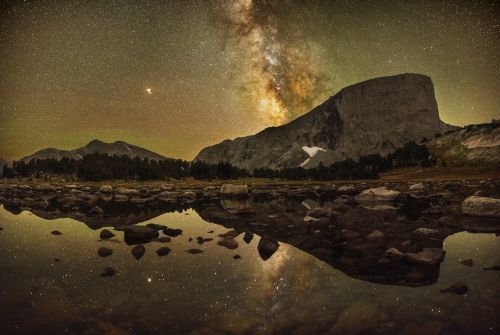The spectacular Milky Way over the picturesque Bavarian mountain, Herzogstand, the remarkable Horsehead Nebula and the Flame Nebula, a vast cloud of gas and dust where new stars are being born; the Royal Observatory’s Insight Investment Astronomy Photographer of the Year 2019 has once more received thousands of outstanding images.
The competition, which is run by the Royal Observatory Greenwich, sponsored by Insight Investment and in association with BBC Sky at Night Magazine, is now in its eleventh year and has broken the record number of entries once more, receiving over 4,600 entries from enthusiastic amateurs and professional photographers, taken from 90 countries across the globe.
The winners will be announced on September 12, and an exhibition of the winning images from the past years of the contest will be on show at the National Maritime Museum in Greenwich from September 13.
(Click on the images for a full-screen resolution)
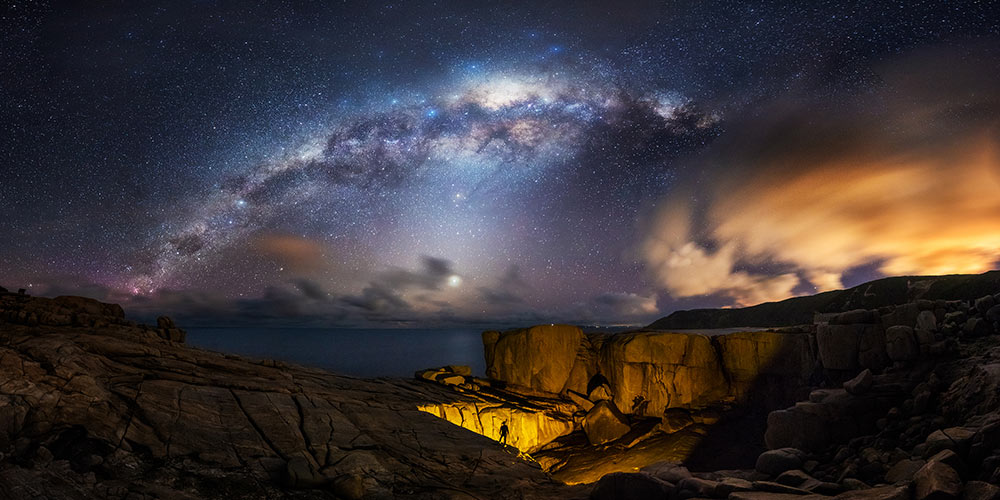
Each year around September and October, the Milky Way is at its best position. The galactic core is right in the middle of the sky. The photographer stood on the cliff by the sea and with his torch he lit up the natural bridge, which looks like a giant hole. The bridge was created by the gradual wearing away of the granite rock by the great Southern Ocean. Photograph: ©Yifan Bai/Astronomy Photographer of the Year 2019
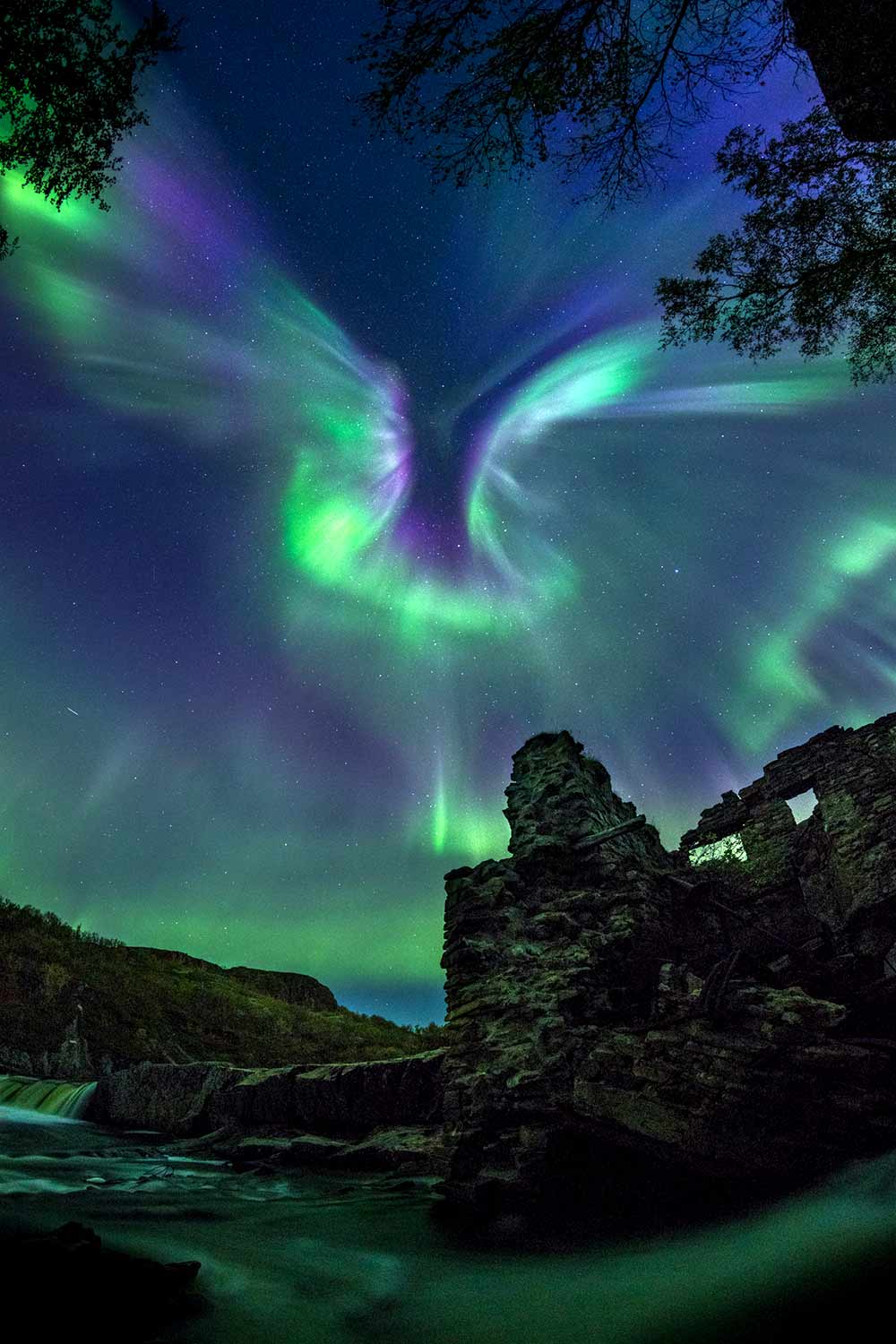
The majestic aurora, shaped like a bird, is spreading its wings over the destroyed military hydroelectric station located two hours away from Murmansk. The photographer has visited this location several times over the years trying to photograph the aurora flaring over the old station. In September 2018 the photographer returned and managed to capture this magnificent shot.
Photograph: ©Alexander Stepanenko/Astronomy Photographer of the Year 2019
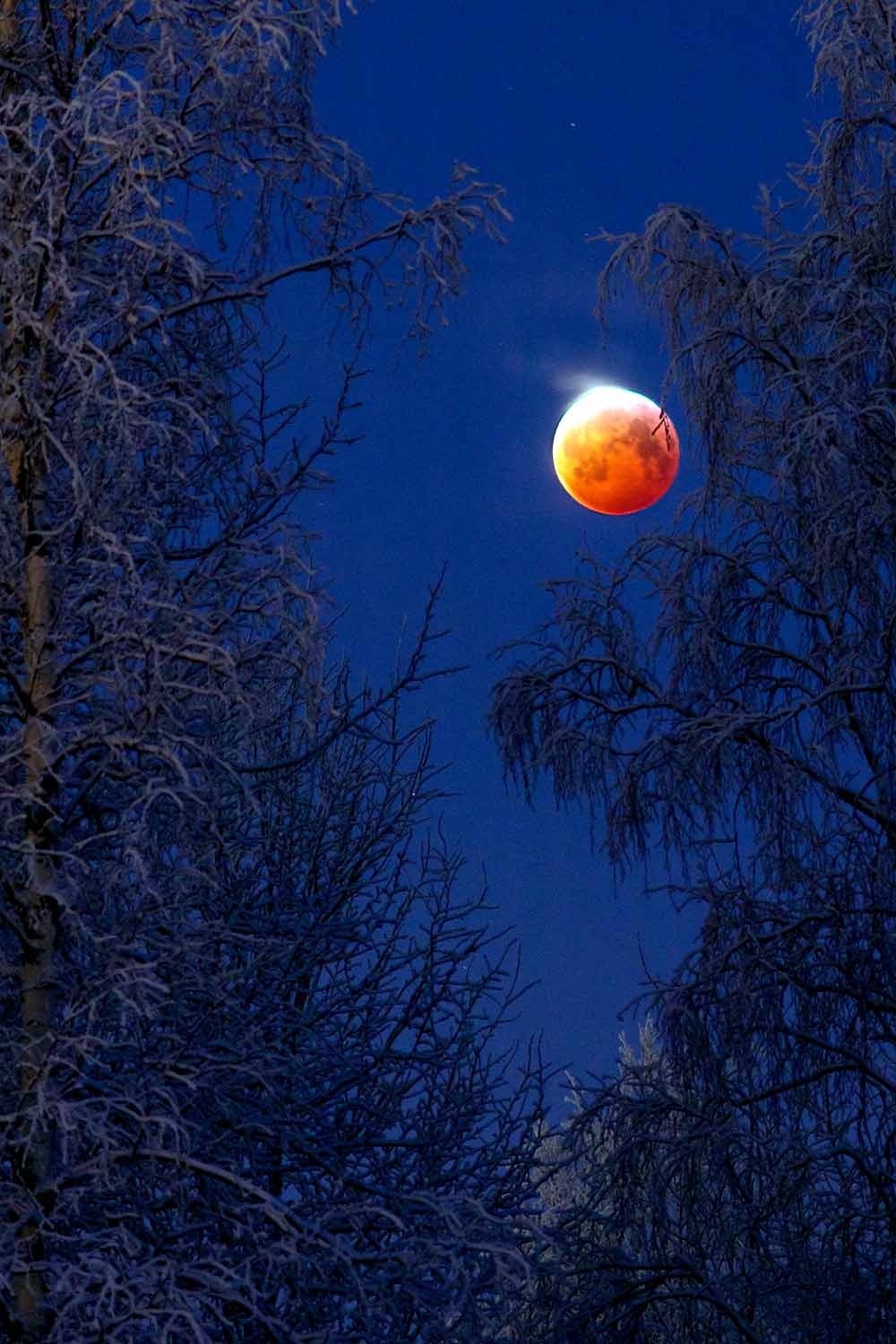
On a very cold morning, with the temperature reaching -27° Celsius, the photographer spent a little over two hours photographing the eclipse and he was using the last battery when he managed to get this shot of the Super Blood Wolf Moon nearing the end of the eclipse. The photographer’s goal was to include the trees in the picture and had very little time to change position and capture the Moon moving between the little opening of the trees. Photograph: ©Keijo Laitala/Astronomy Photographer of the Year 2019
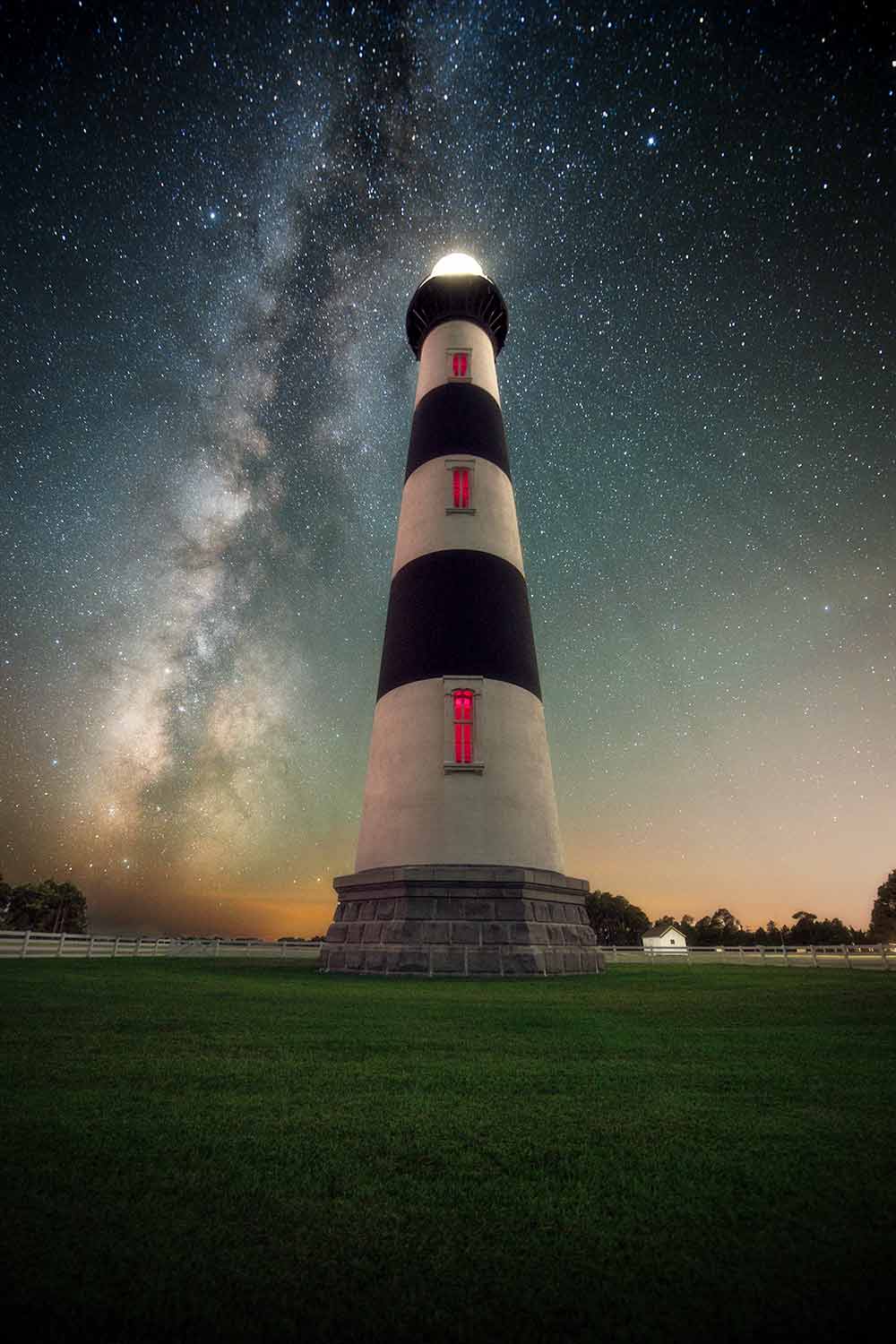
After several shots throughout the evening right before wrapping-up for the night, the photographer captured the Bodie Island Lighthouse in the Outer Banks of North Carolina sized up with the Milky Way and the starry sky exploding in the background. Photograph: ©Jason Perry/Astronomy Photographer of the Year 2019
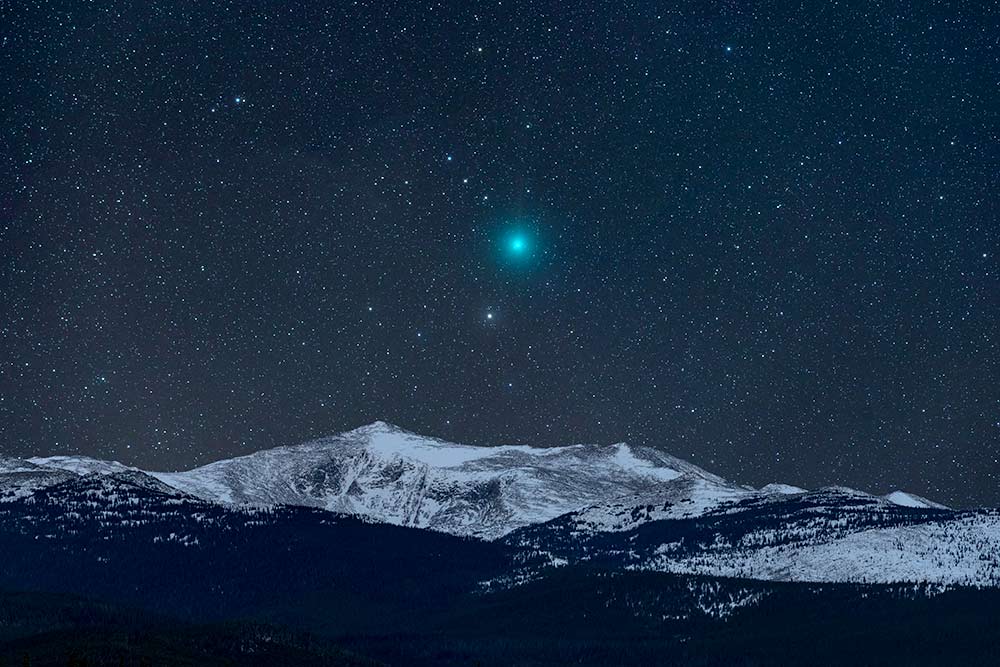
The photographer has been wanting to get an image like this for years, but bright comets have been lacking. Then along came 46P/Wirtanen. The photographer used software to simulate the view and it showed that the comet would set over LoafMountain in the Bighorns at 3 am on that particular night in early December. These mountains are often too windy for long exposures, but everything came together. Using a tracking mount, the photographer shot a 4-panel mosaic of the comet and two additional exposures of the snowy mountain and later combined everything together. Photograph: ©Kevin Palmer/Astronomy Photographer of the Year 2019
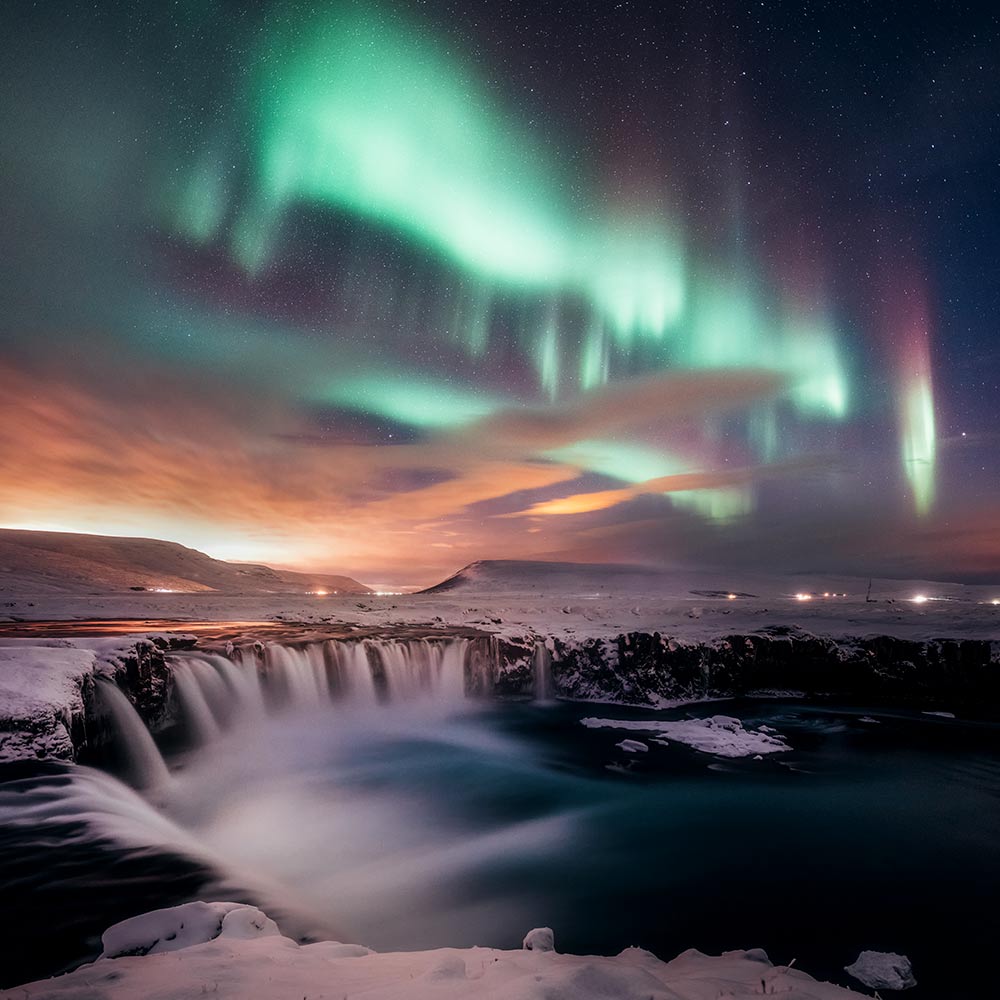
The Goðafoss waterfall is one of the most spectacular waterfalls in Iceland. The water of the river Skjálfandafljót falls from a height of 12 metres over a width of 30 metres. The photographer had visited the location three times before and each time the weather was not ideal. This time around the photographer had a half an hour window of good weather and during this brief time, the aurora began to dance. Photograph: ©Sutie Yang/Astronomy Photographer of the Year 2019
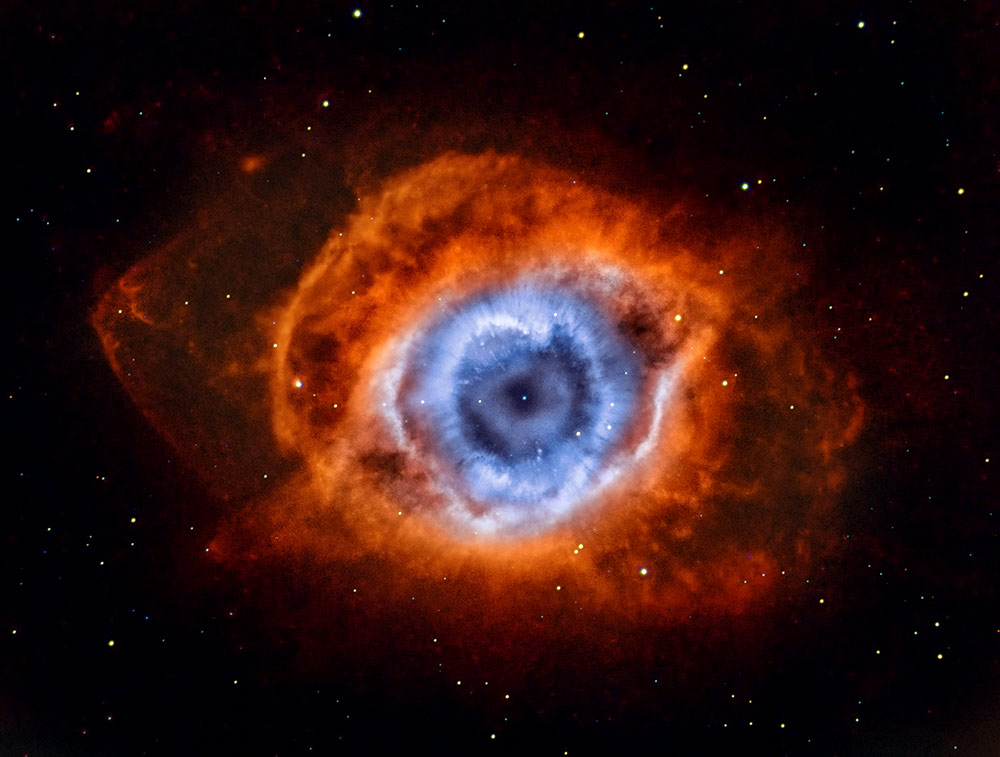
NGC 7293, also known as the Helix Nebula is so-named because it appears that you are looking down the axis of a helix. In reality, it is now understood to have a surprisingly complex geometry, including radial filaments and extended outer loops. The Helix Nebula is one of the brightest and closest examples of a planetary nebula, a gas cloud created at the end of the life of a sun-like star. The remnant central stellar core, destined to become a white dwarf star, glows in light so energetic it causes the previously expelled gas to fluoresce. Photograph: ©Andrew Campbell/Astronomy Photographer of the Year 2019
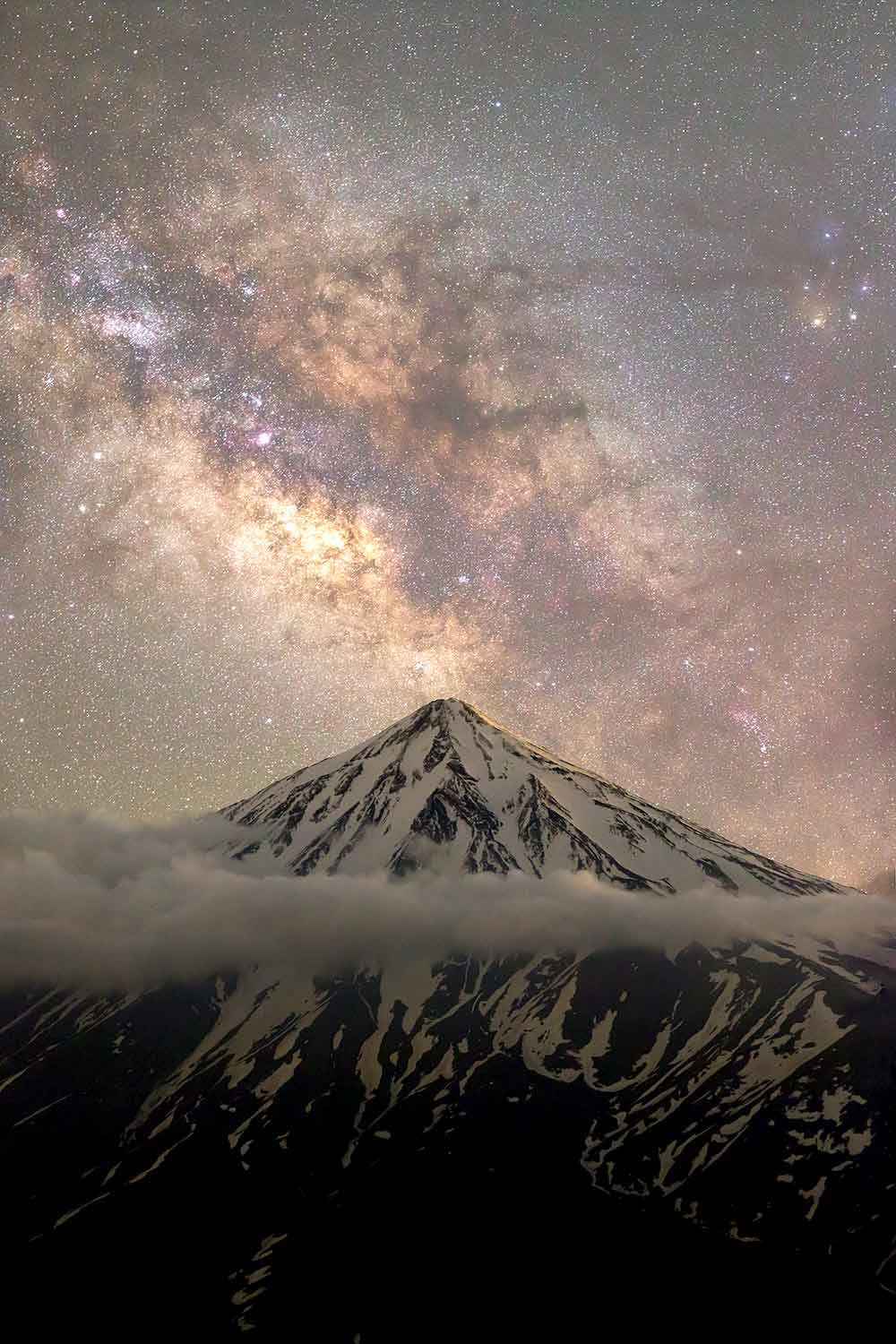
The brightest part of the Milky Way, the heart of our galaxy, towers above the peak of the grand volcanic mountain, Damavand. Mount Damavand is the highest mountain in the Middle East and the highest volcano in Asia. For the photographer this is the place that you can reach serenity. Photograph: ©Majid Ghohroodi/Astronomy Photographer of the Year 2019

The NGC 6357, commonly known as the Lobster Nebula, spans about 400 light years and lies about 8,000 light years away from the Earth, toward the constellation of the Scorpion. Due to the nature of light collected, colours in this image are arbitrary, with hot hydrogen shown in red, and oxygen and sulphur in blue and green respectively. However, extreme care was taken to preserve the faintest structures and intricacies within the nebulosity when stitching the data together. Data for this narrowband image was acquired over three nights in June 2018 from the photographer’s small backyard in the tropical North Queensland. Photograph: ©Suavi Lipinski/Astronomy Photographer of the Year 2019
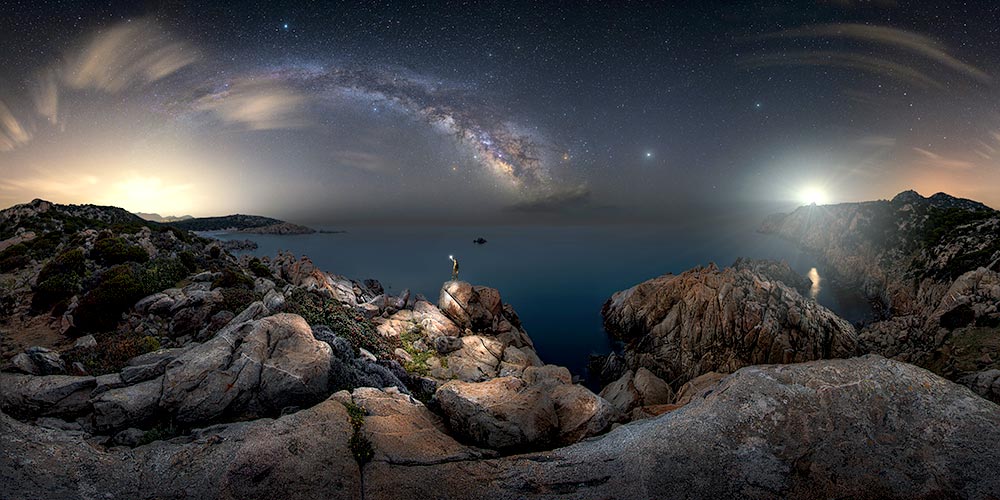
This photo was a complex challenge for the photographer. When he arrived at night on the cliff of Cala Cipolla in the south of Sardinia he looked for a very high point to take a 360 degree shot and had to make sure that all the elements would be in the right place. The Capo Malfatano lighthouse on the right with Ursa Major above, the light pollution of Chia, the small town on the left and finally, the photographer holding the headlight under an incredible Milky Way created the perfect composition for the photographer’s first 360° panorama with the astrotracked sky. Photograph: ©Alessandro Cantarelli/Astronomy Photographer of the Year 2019
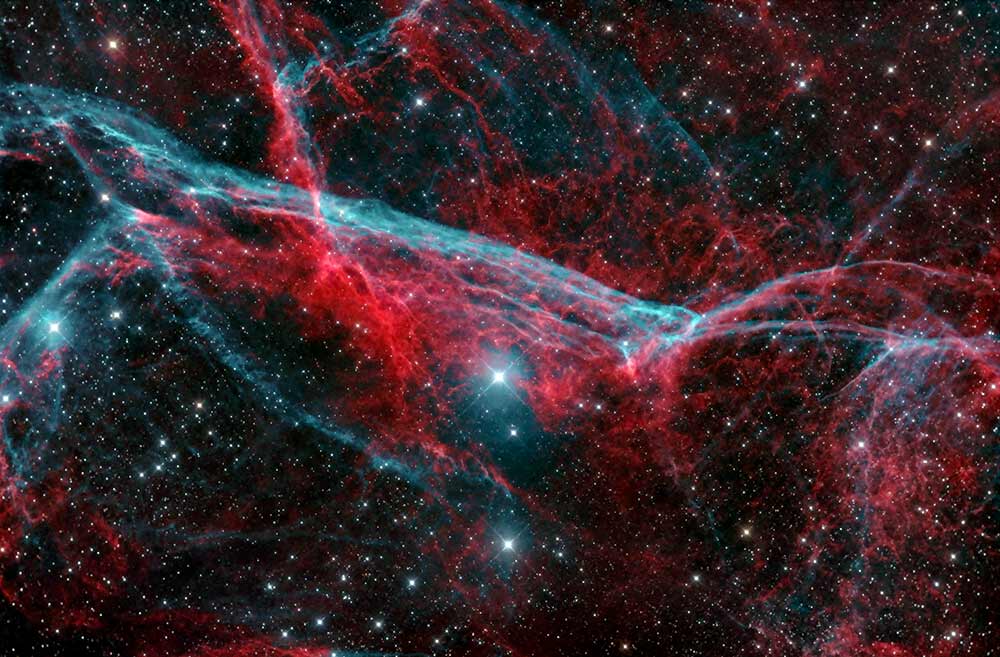
The Gum Nebula or Gum 12 is an emission nebula that extends 36° across the night sky and is actually the very large 12,000-year-old Vela supernova remnant. It mainly consists of red hydrogen and blue doubly ionized oxygen. This is a bi-colour image with H-a mapped to red and OIII mapped to both green and blue. Photograph: ©Eddie Trimarchi/Astronomy Photographer of the Year 2019
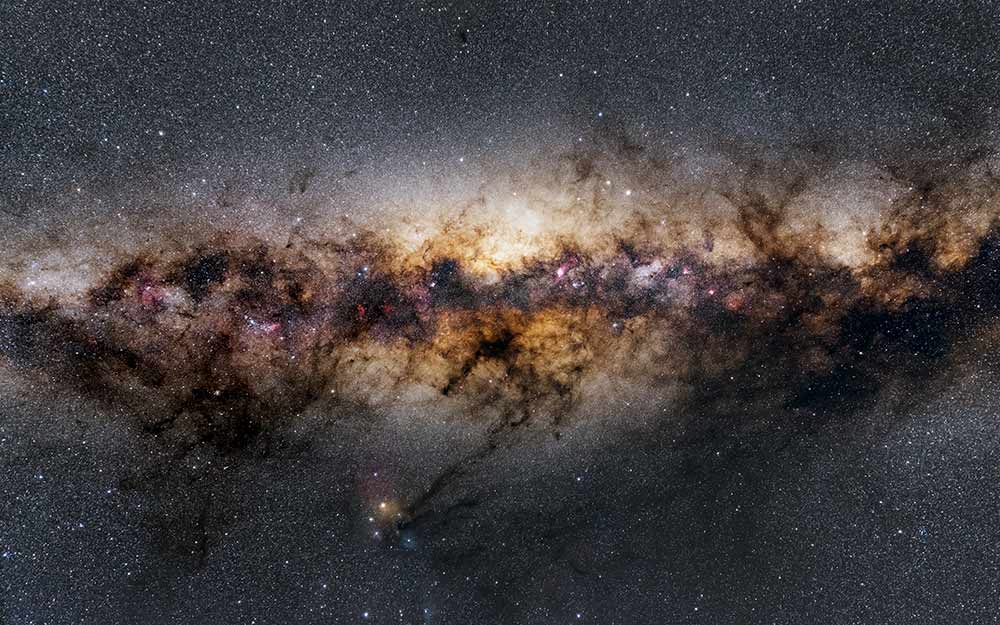
During the photographer’s Namibian expedition, there were no plans to take images with a photo lens, but the look of the Milky Way centre in the zenith was simply too breathtaking to ignore. The Milky Way is a barred spiral galaxy and at the center there is the galactic bulge, the heart of the galaxy, full of gas, dust, and stars. That was the very first time the photographer truly observed and fathomed that we live inside a galactic disk. Photograph: ©Péter Feltóti/Astronomy Photographer of the Year 2019
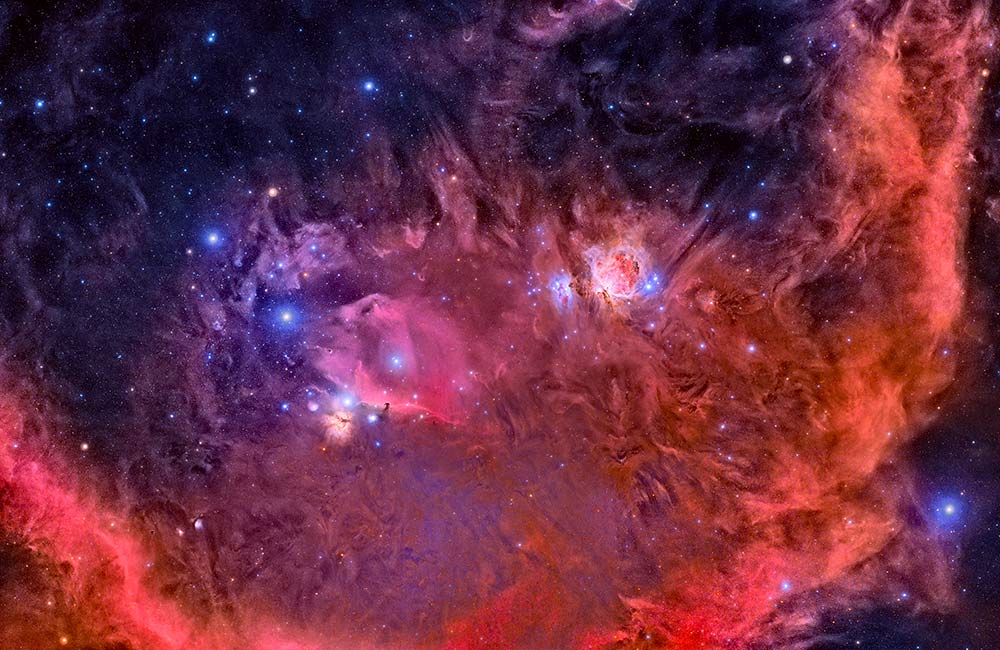
This image depicts several of the most photographed and mesmerising astronomical objects, from the famous Orion Nebula (M 42) to the Horsehead Nebula (IC 434). In the lower left we also see the reflection nebula M 78, also known as NGC 2068. The surrounding ring is the emission nebula known as Barnard's Loop. This is a mosaic of 9 photographs and a combination of RGB and H-alpha.
Photograph: ©Raul Villaverde Fraile/Astronomy Photographer of the Year 2019
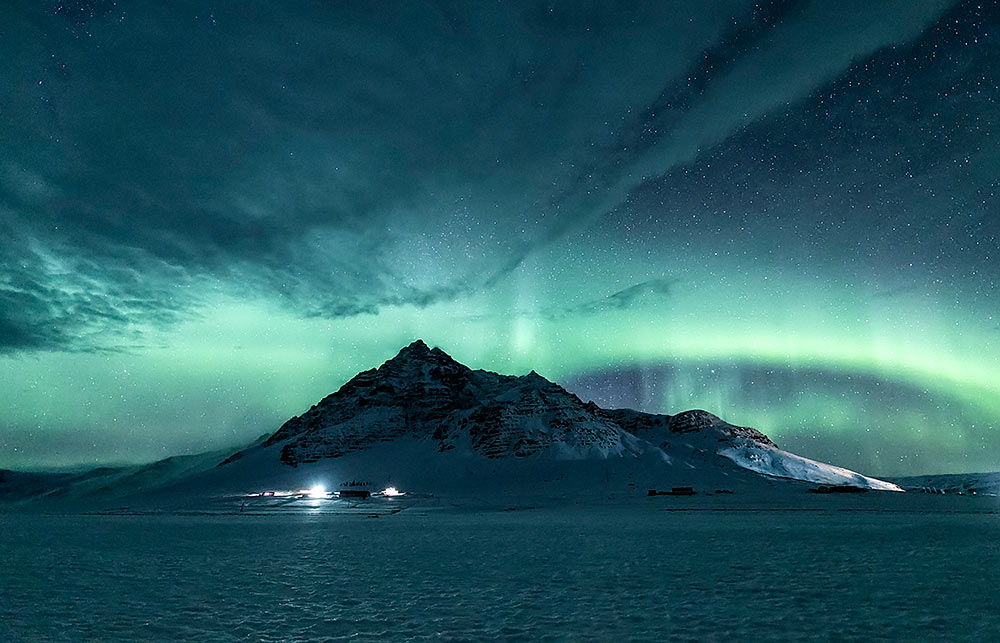
In the winter of 2018, the photographer and his family travelled to Iceland to capture the Northern Lights. Just at the right time, the photographer witnessed two outbursts and screamed with excitement. This spectacular sight can’t be seen in the mid-latitudes so it was a very special and unique moment. Photograph: ©Xiuquan Zhang/Astronomy Photographer of the Year 2019
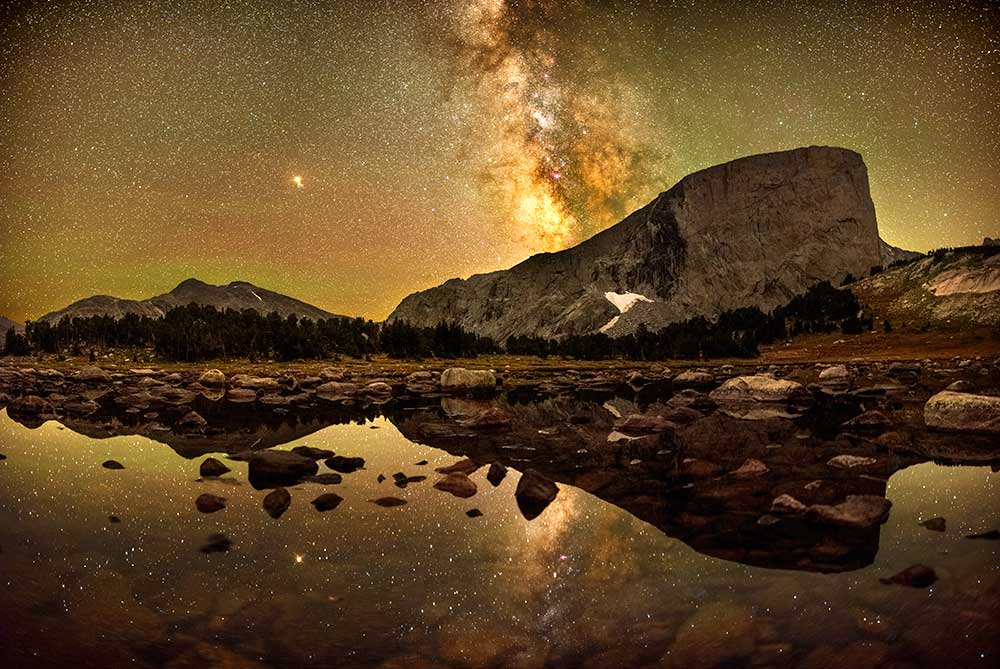
MountHooker sits 15 miles past alpine lakes and mountain passes in the Wind River Mountain Range in Wyoming. After the sun set, the photographer ventured across the lake near camp. The lake was shallow; at its far end, the low water revealed stones of various sizes. Following the narrow tunnel of the headlamp's beam, the photographer leapt from rock to stone across the water. The sky was clear, the glorious Milky Way was looming over the mountains and the stars shone bright and everything was reflected beautifully on the foreground. The photographer sat on a rock about 20 feet into the lake and started to shoot. Engulfed in dark beauty the photographer realised that astrophotography is primarily about the experience, with the beautiful photo just an extra. Photograph: ©Marc Toso/Astronomy Photographer of the Year 2019
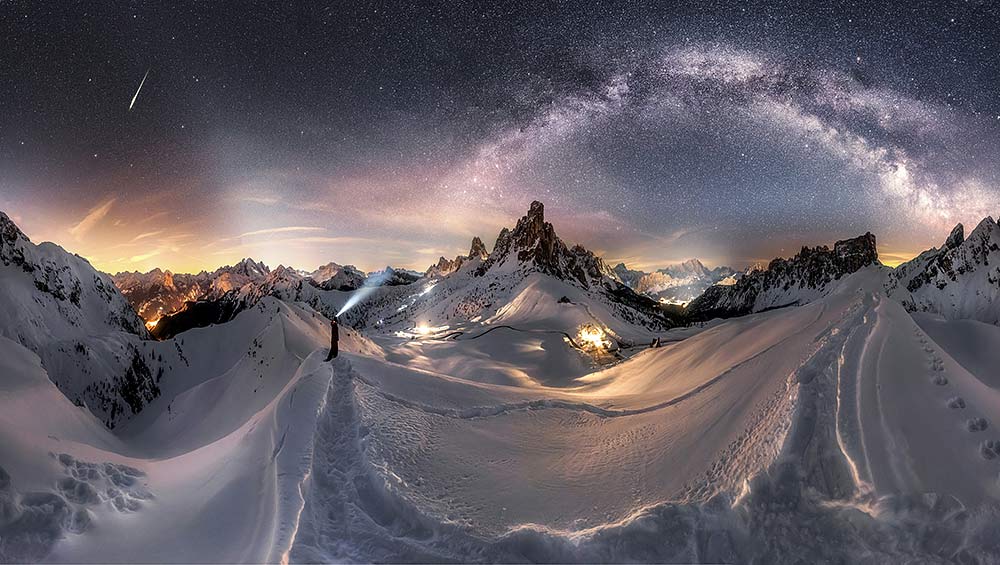
The Milky Way is stretching over the splendid Dolomites dressed in white. The photographer shot the foreground at 7 pm in good blue hour and took many vertical images. The Milky Way was captured at 5:30 am the next morning at the exact same position. The photographer composed this panorama using many vertical shots so the foreground and the comet would be perfectly lit. Photograph: ©Nicolai Brügger/Astronomy Photographer of the Year 2019
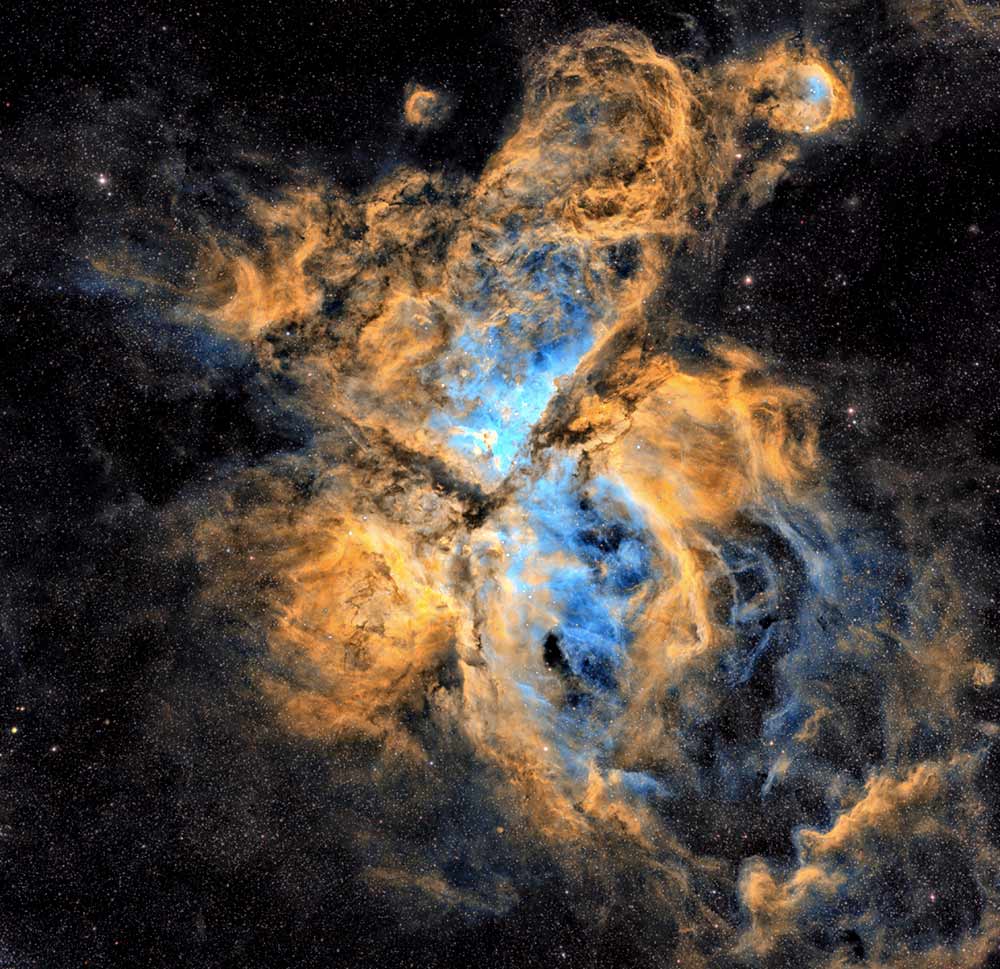
For the photographer the Carina Nebula is the most beautiful nebula in the night sky. The image showcases how extensive and colourful the Nebula really is. Using the iTelescope service he shot this picture with a monochrome camera using three different filters hydrogen alpha, OIII and SII and then, after collecting all the data, he combined those three filters into one colour image using Pixinsight. Photograph: ©Petar Babić/Astronomy Photographer of the Year 2019
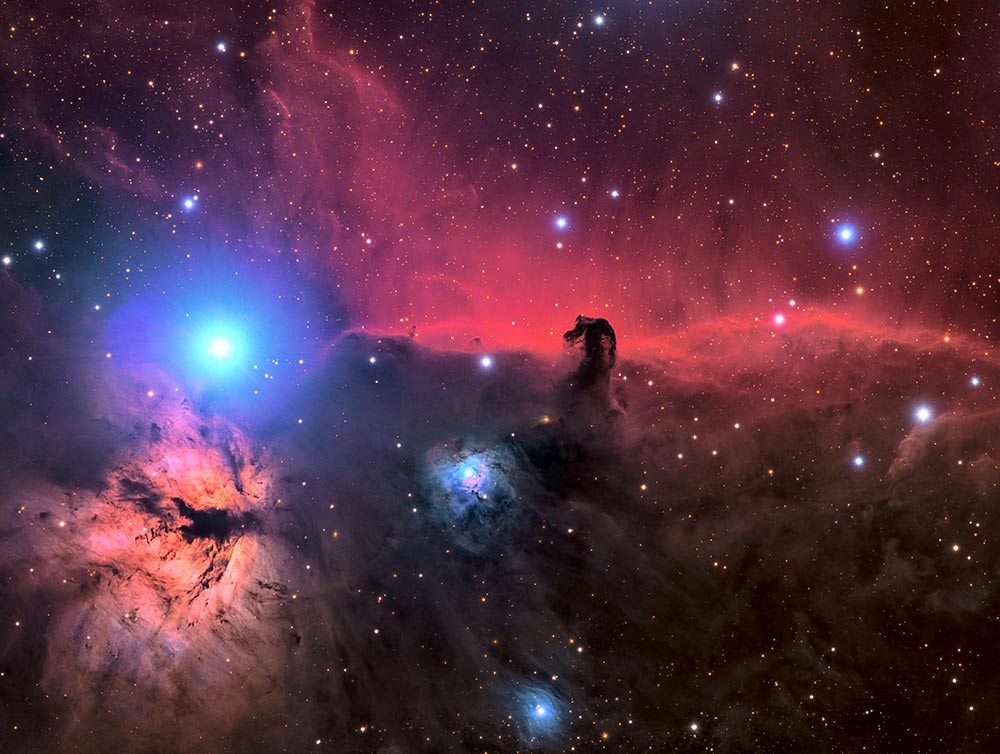
This image was heavily inspired by Ken Crawford's photo of the Horsehead Nebula which perfectly showcased the hydrogen filaments located within the blue reflection nebula, NGC 2023, just below the Horsehead. The small pink filaments contrast beautifully against the blue reflection nebula. The photographer thinks of those small filaments as the cherry on top of this spectacular region of the night sky caught in a swirl of dust and gas. Photograph: ©Connor Matherne/Astronomy Photographer of the Year 2019
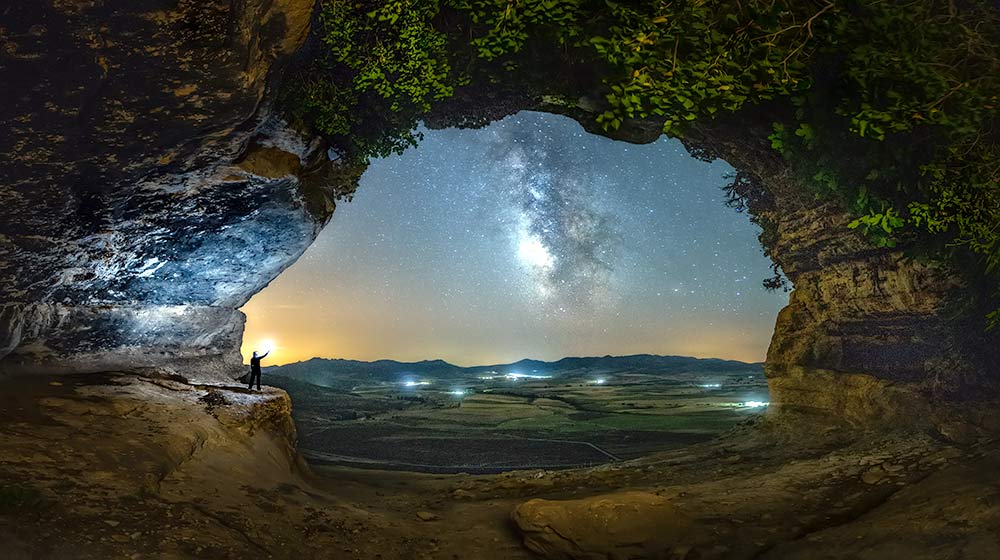
This panorama was taken in the caves of Zaén, formed approximately 11 million years ago. With this image, the photographer wanted to establish a link between nature, the universe and humanity through dark and light. With a Mini Maglite flashlight, the photographer illuminated the cave and the shot was planned with Planit! Pro to capture the Milky Way in the right place. The panoramic was formed by five shots, united with PTGui Pro, revealed in Lightroom and processed in Adobe Photoshop. Photograph: ©David Ros Garcia/Astronomy Photographer of the Year 2019

The galactic centre shines bright over the Davenport Pier. Built in the 1860s, the pier was a platform used for transporting timber north towards San Francisco. Long abandoned since then, the wharf eroded and today only the concrete arches that once held the pier have survived the test of time. Despite its proximity to urban areas, this stretch of the Pacific coast is sparsely populated and an excellent place to view and photograph the stars. Photograph: ©Marcin Zajac/Astronomy Photographer of the Year 2019



